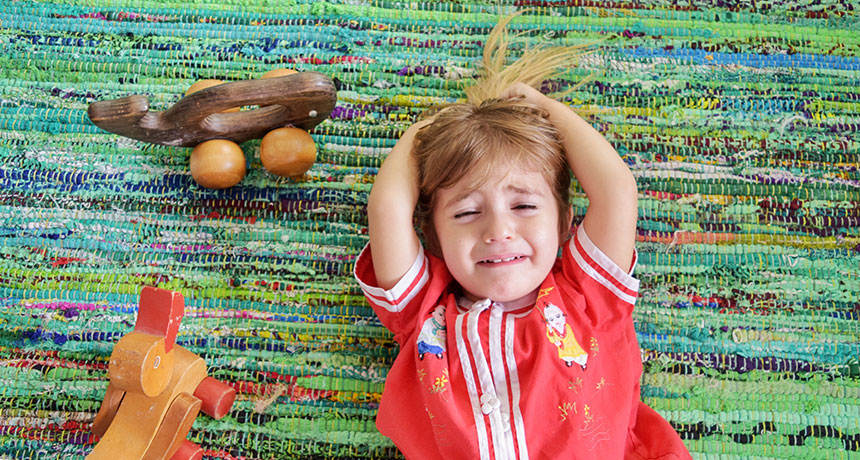Here’s some slim science on temper tantrums

Big emotions can overwhelm small people, but most tantrums probably don’t have easy solutions.
Lisa5201/iStockphoto
- More than 2 years ago
Someone new has entered my life — a tiny, ear-splitting maniac who inchworms across the entire living room on her arched, furious back. My 3-year-old daughter hasn’t thrown temper tantrums, but to our surprise, her 1½-year-old sister is happy to fill that void.
Last week, my pleasant yet firm, “No, you can’t eat the stick of butter,” sent my toddler down to the floor, where she shrieked and writhed for what felt like an eternity. I’ve learned that talking to her or even looking at her added fuel to her fiery fit, so there’s not much to do other than ride out the storm.
It’s awful, of course, to see how miserable a kid is in the throes of a tantrum. And the fact that she can’t fully express her little heart with words just makes it worse. Adults, with our decades of practice, have trouble wrangling big emotions, so it’s no surprise that children can be easily overcome.
Because tantrums offer glimpses into the expression of strong emotions, they are a “compelling phenomenon for scientific study,” psychologist James Green of the University of Connecticut and colleagues wrote in a 2011 paper in the journal Emotion. I agree, by the way, but I am also supremely relieved that I am not the one studying them. To catch tantrums in their native habitat, the scientists outfitted 13 preschoolers with special onesies with microphones sewn into the front, and waited for the kids to lose their minds.
This masochistic experiment caught 24 emotional tsunamis in 2- to 3-year olds. By analyzing the sounds contained in them, the researchers could deconstruct tantrums into five types of noises, each with its own with distinct auditory quality. At the most intense end of the acoustic spectrum was the screams. The acoustical assault slowly eased as sounds became less energetic yells, cries, whines and fusses.
Screams and yells are more similar to each other, forming a group of sounds that often mean anger, the authors suggest. Cries, fusses and whines also group together, representing sadness. This excruciatingly detailed breakdown hints that tantrums have underlying structures. Sadly, the results do not tell us parents how to head off tantrums in the first place.
Simple preventives like keeping kids well-fed, rested and comfortable can stave off some meltdowns, but beyond those basics, we may be out of luck. My somewhat fatalistic view is that when faced with unruly emotions, some kids just can’t help themselves. After all, my older daughter doesn’t throw tantrums, at least not yet.
Yet I do suspect that my own behavior is involved. An illuminating study in the August 2013 Journal of Behavioral Medicine hints that parents of tantrum-prone kids can curb tantrums (or at least their perceptions of tantrums) by somehow changing their own behavior. After eight days of giving their kids “flower essence,” an inert substance sold as a tantrum reducer, parents reported fewer outbursts from their kids. The effect was “placebo by proxy,” meaning that the parents’ beliefs in the product — and possibly their subsequent behavior — may have transferred to their kids. So just believing that their kid is going to throw fewer tantrums led the parents to believe that their kid threw fewer tantrums.
The study couldn’t say whether tantrums actually decreased or parents just perceived fewer of them. But really, either one would be an improvement in our house. Either that or my toddler is going to eat a lot of butter.







